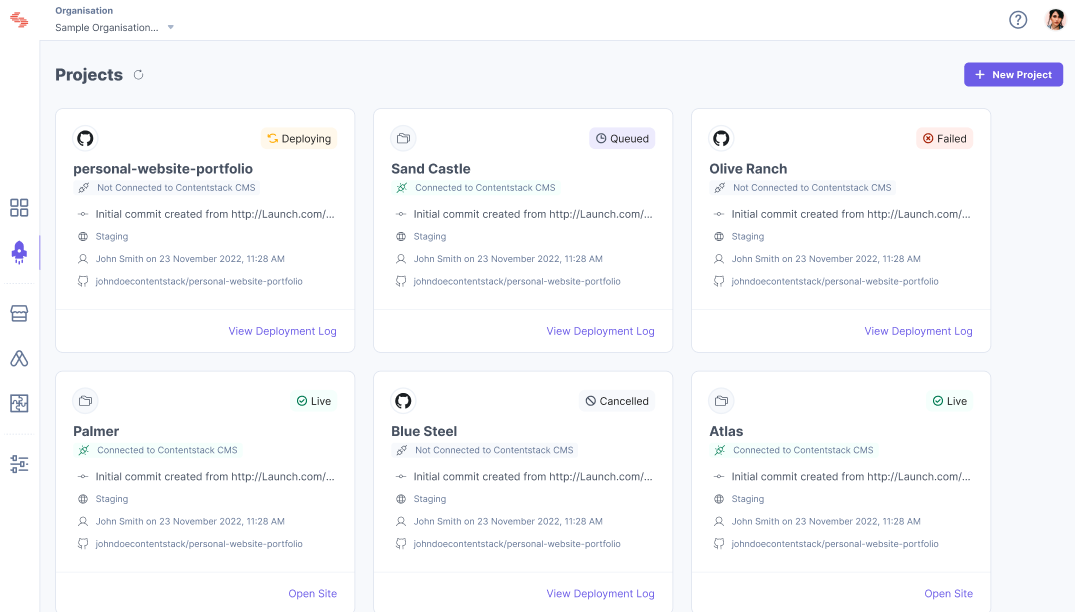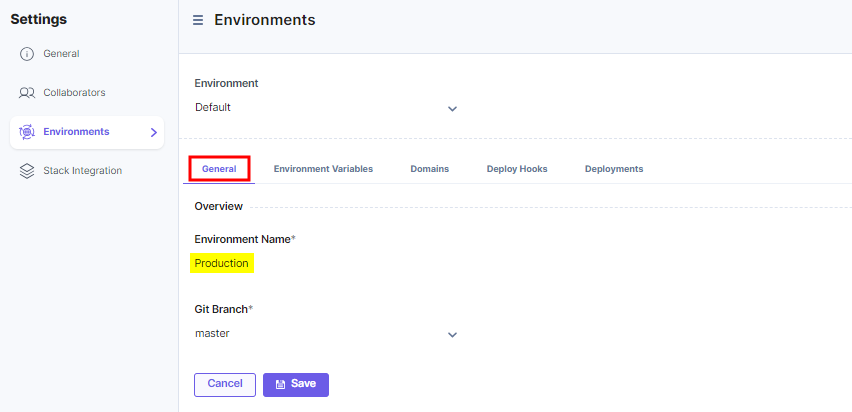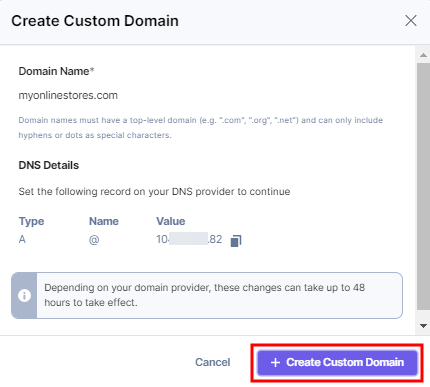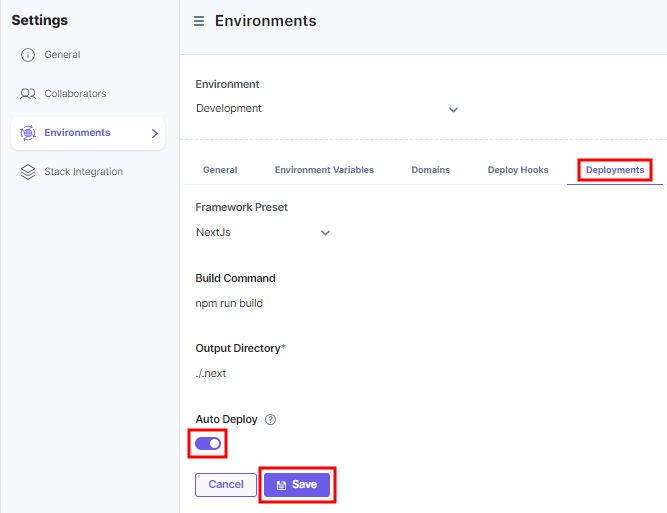Setting up Production and Non-Production Environments
Setup Production and Non-Production Environment
When apps are being developed and released, software developers use environments to create stages. As per industry standards for environments most of the processes begin with development and end with production.
Launch allows you to create such environments.
Prerequisites
-
Access to Launch for your organization
Create a Production Environment
Follow the steps to convert the Default environment of a project to production environment.
-
From the Launch landing page, open the project for which you want to change the Default environment to production environment.

-
In the Environments screen, click the Default environment.
-
Click the ellipses next to Default and then click Configure.

Note: You can also create a new environment for production by following the steps in the Create an Environment section in this guide. Then, proceed with the following steps to configure the environment to set it up as a production environment.
-
In Environments under Settings, click General and enter Production as the Environment Name.

-
Click the Save button.
-
Next, click Deployments.

-
Click the Auto Deploy toggle to disable it, and then click the Save button.
Note: For Git repository based projects, you can prevent the ‘Production’ environment from automatically deploying any new commits that you push.
-
You can add a custom domain for your projects. Click Domains and click the + New Custom Domain button, to add a custom domain.


-
Click the Environments icon in the left panel and then click the production environment you created to view the Deployments page.

-
You have successfully set up a production environment for your projects.
Create a Non-Production Environment
Follow the steps to create a non-production environment.
-
Follow the steps provided in the Create an Environment section in this guide.
Note: Make sure to add the Environment Name as per the non-production environment you want to create. For example, if you want to create a development environment, add the Environment Name as Development.
-
Next, in Environments under Settings, click Deployments.
-
Click the Auto Deploy toggle to enable it, and then click the Save button.

Note: Skip this step if the Auto Deploy toggle is already enabled.
You have successfully set up a non-production environment for your projects.
Next Up
Article
Environment Variables
5m
